Cabo San Lucas, Mexico
Hello all. Thanks for checking back. Today we are in Cabo San Lucas, Mexico (a.k.a. Cabo) which translates to “Cape Saint Luke”.
We have been lucky enough to have previously visited the fun city of Cabo several times. Karen has a great story of her catching a Marlon in the ‘80s (which is quite a feat)! It was exciting to reel it in. Afterwards, the fishing boat captain convinced her to give the fish to the struggling local folks at the dock. She wanted to keep the sword (nose) as a trophy, so he helped her to save it.
They were staying in a friend’s brand new, really nice timeshare. She recalls it was one of the first times that they had seen the new oversized stainless-steel side-by-side refrigerators. When she put the sword in the fridge and shut the door, it was too long to fit, and the sword poked a hole in the door and was sticking out into the kitchen. Eek!
No worries. The nice folks at the timeshare sent a handful of workers over with a brand-new refrigerator and that was the last they heard of it. (I always chuckle when I hear this story.)
So we were excited to go whale watching during our day here. Karen was last here with Tristan and Niko in 2017, and they had really good luck seeing some whales breach and stuff. (I’ve always had mostly bad luck whale watching, the exception being San Diego a few years back.) So, with fingers crossed, we headed out.
Our first stop was “El Archo” the famous arch of Cabo San Lucas. Located at the tip of the Baja Peninsula, the arch (sometimes called “Land’s End”) is a hole in a rock formation.
I always get sad when I see sea arches, because I once visited a place where an arch had recently collapsed. I learned at that time that most large flat elongated ocean rock formations eventually develop into a sea arch, then eventually deteriorate and collapse creating a pair of columns. These columns eventually are worn down a collapse into the ocean. I guess the cycle of like applies even to rock structures. Even though it takes (perhaps) thousands of years, it still makes me sad…
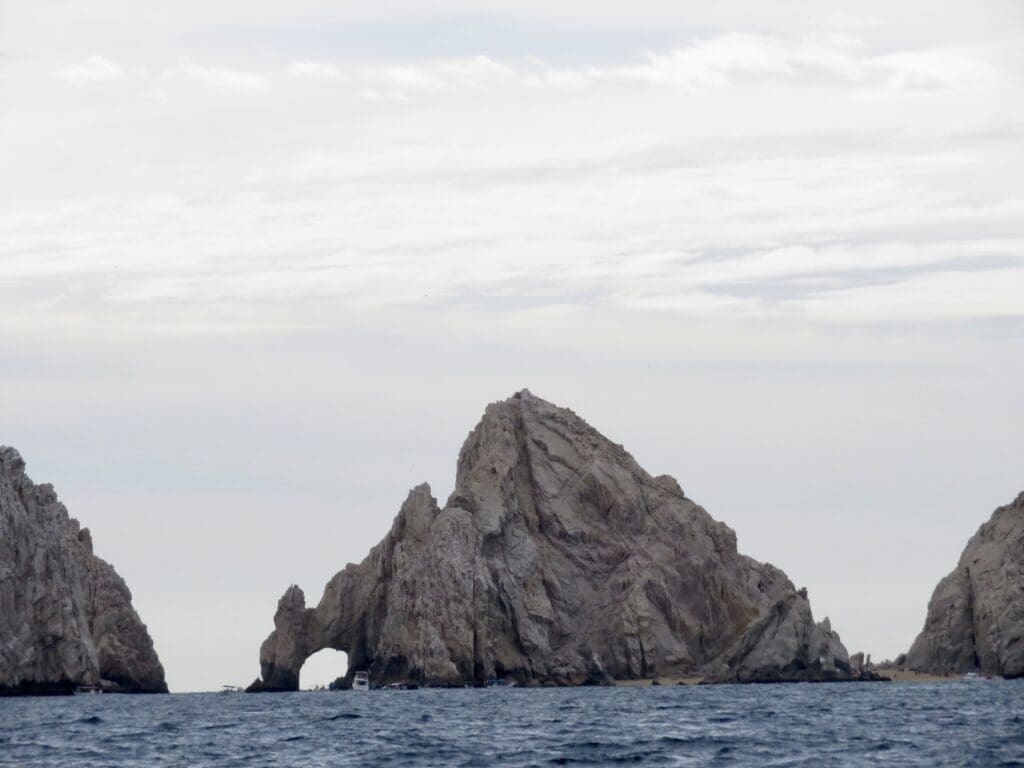
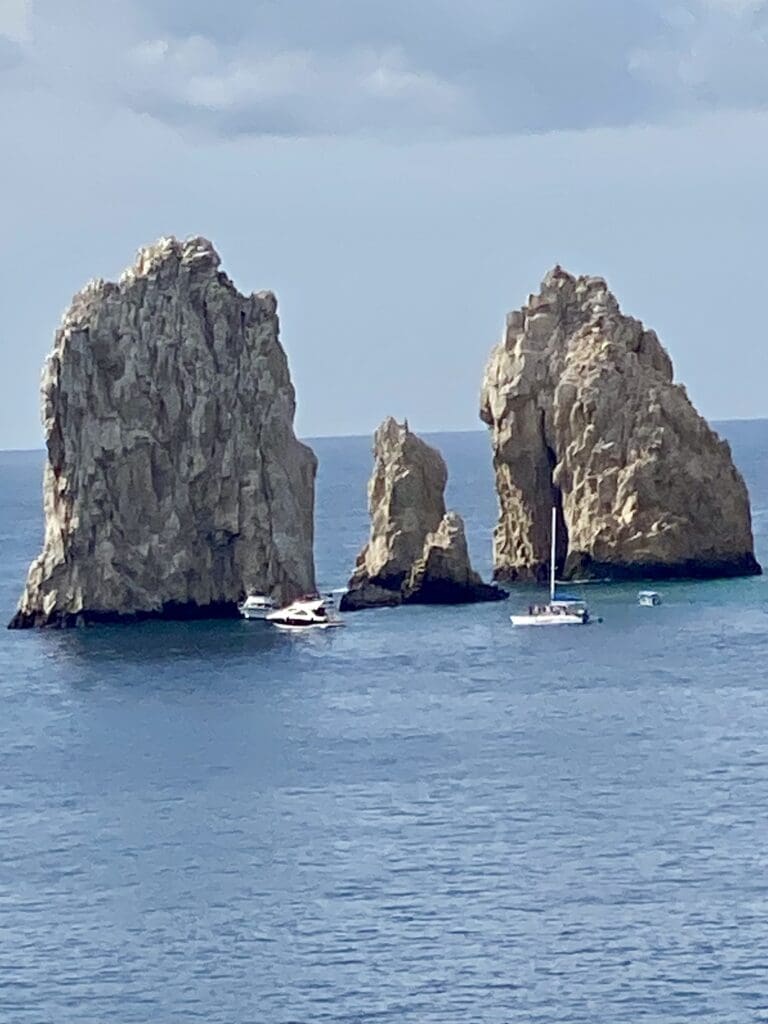
On one side of the arch is another rock formation rising from the sea, and on the other is the famous “Lover’s Beach”. The peninsula separates The Sea of Cortez from the Pacific Ocean. A funny thing is that the Sea of Cortez side is a very calm beach. Those lucky enough to have a small boat or jet ski often spend their day on the small-ish beach swimming and enjoying the water. However, if you wander a hundred yards over the horizon, the beach on the Pacific side has dangerous rip-tide currents and rough seas (and is no fun at all)! So, while the eastern beach is referred to as “Lover’s Beach”, the western side is called, wait for it… “Divorce Beach”!
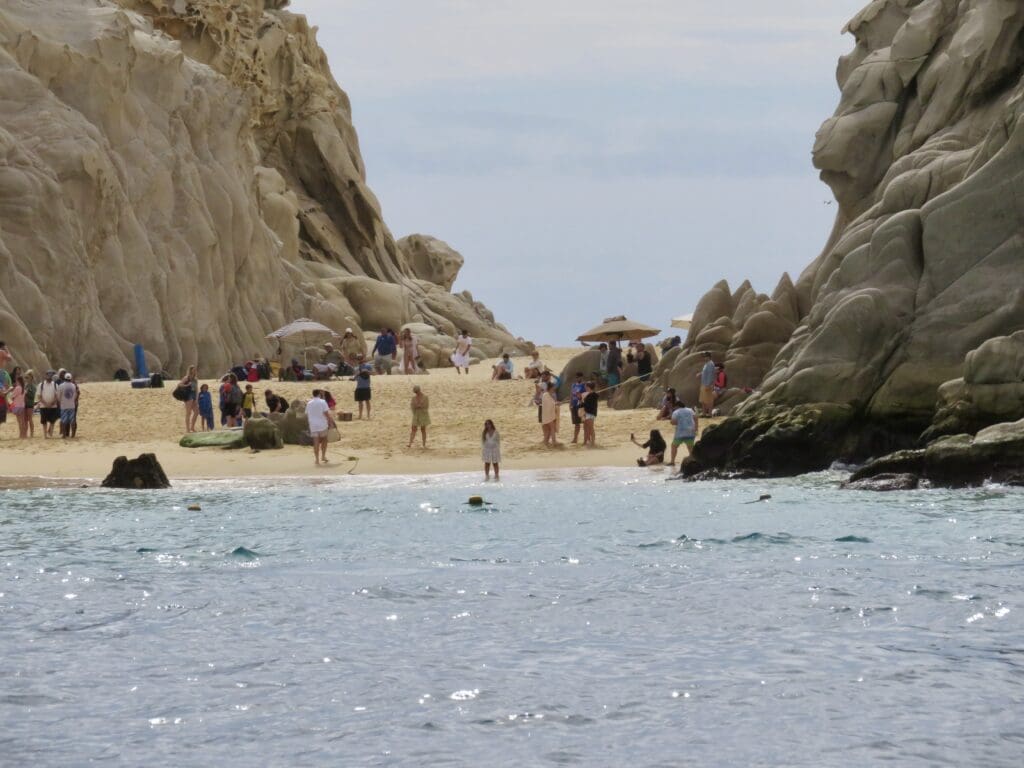
Another noteworthy item of interest is that, in recent years, the Mexican people have made a genuine effort to have others start referring to “The Sea of Cortez” as “The Sea of California.” This is because they have come to realize that when the Spanish conquistador Hernan Cortez conquered Mexico in the 1500s, a great many injustices were enacted upon the native people. I am going to stay out of the politics, but will respectfully refer to this area as the Sea of California henceforth.
We also learned that the Sea of California is the earth’s youngest sea, and that the waters just off of the arch location is where freedivers recently set a record, diving to depths of over 500 feet (without tanks)!
Next, we were off to see the whales. As luck would have it, several of our buddies were on the same boat. So that was nice.
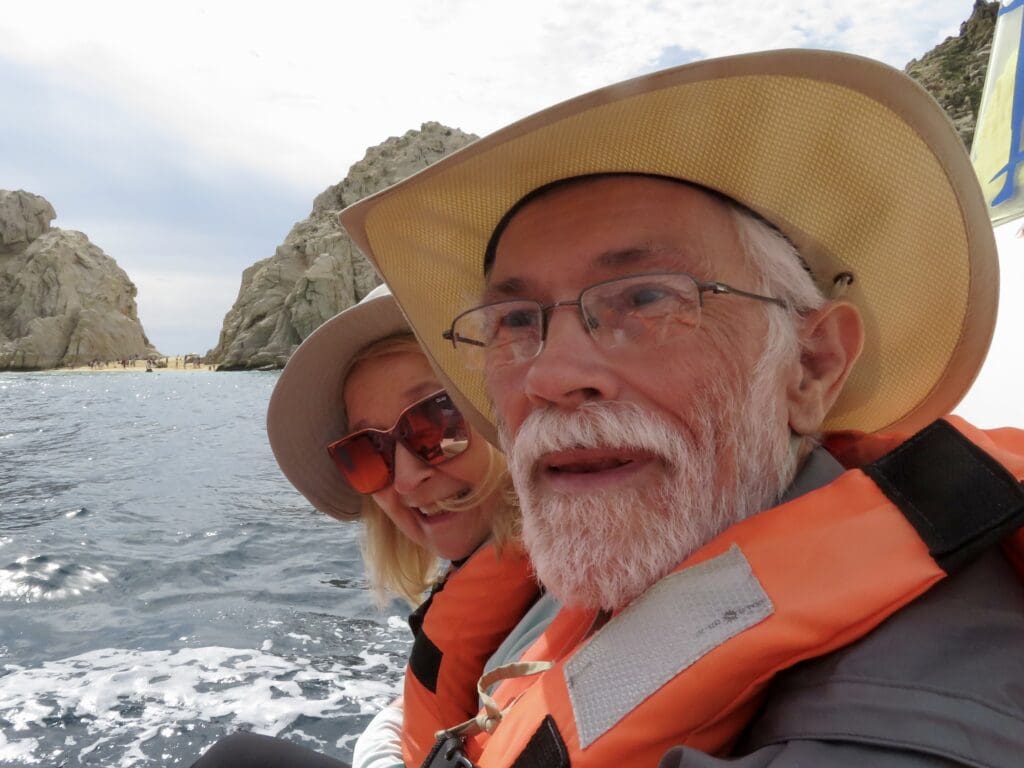
We happened to be in Cabo during peak whale watching season. Most of Cabo’s whales tend to be Humpback and Gray Whales, but we were told that today we would likely see Humpback Whales.

Our very first whale sighting was a huge breach. The guide explained that a “breach” is when a whale jumps out of the water. It is believed that the primary reason whales tend to do this is to break loose the barnacles and pesky parasites that cling to their bodies. As you can imagine, a 40-ton whale splashing down in the ocean creates quite a lot of force (that easily knocks the parasites from their bodies). Interestingly, every time this happens, the area is instantly swarming with gulls, presumably looking for an easy (parasite) meal. Yum…. It is also believed that the (underwater) sound created by the breach is used to communicate, and possibly to mark a male’s territory.
While it is very exciting to see a whale breach, sadly, the breaches are generally few and far between. We were not able to capture a photo of this, but we did see quite a few whales and got a good picture of a one’s fluke (tail).
During our adventure, we also learned that a whale’s fluke is similar to a human fingerprint, and is widely used by the scientific community to track individual whale movements and the like. (Not surprisingly, radio tagging is ineffective with large whales. It turns out breaching dislodged more than just parasites…)
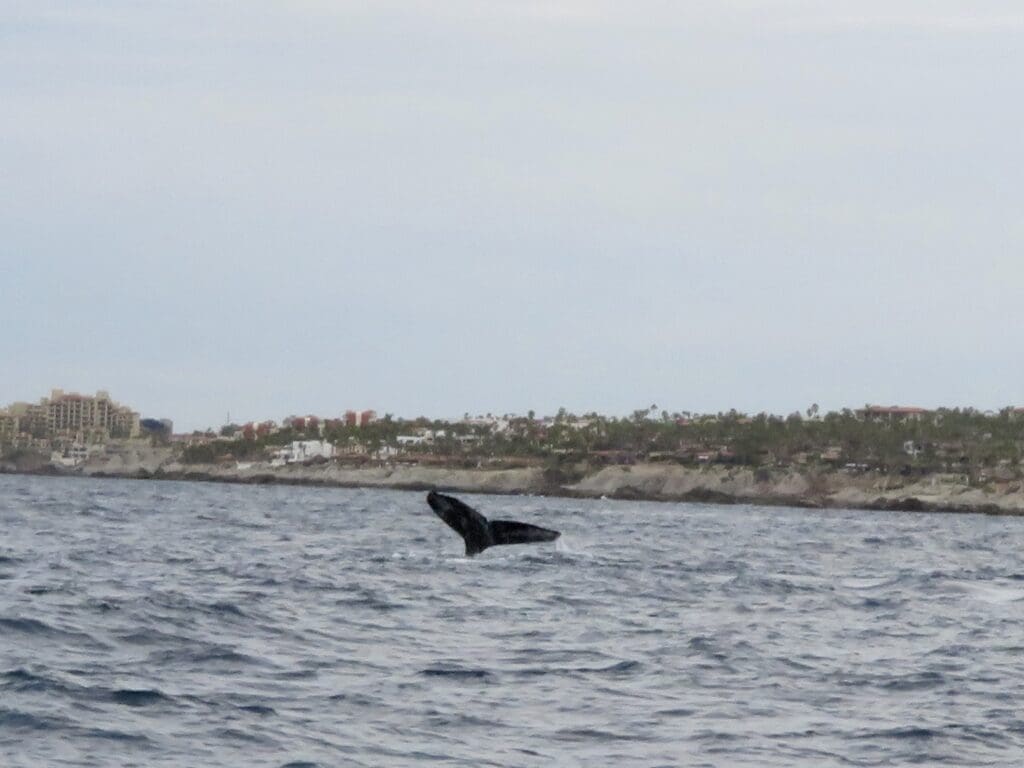
Also, we learned that, while our perception is that whales are friendly, docile creatures, the truth is that the males tend to spend much of their lives fighting with one another over mates, territories, and the like. (Come on fellas. There is plenty of krill to go around…)
While we were enjoying watching the whales, I especially liked how they lay on their sides and wave at the tourists. I like to think that this is because the whale watching tourism industry played a big part in ending whaling. We learned on a previous (Iceland) vacation that, even though the natural resources that come from whaling had lost a vast majority of their financial value, many nations resisted ending the harvesting of whales until they were forced to in the 1980s. Eventually they figured out that it was much more profitable to serve the whaling tourism industry than to continue to harvest whales for food and oil.
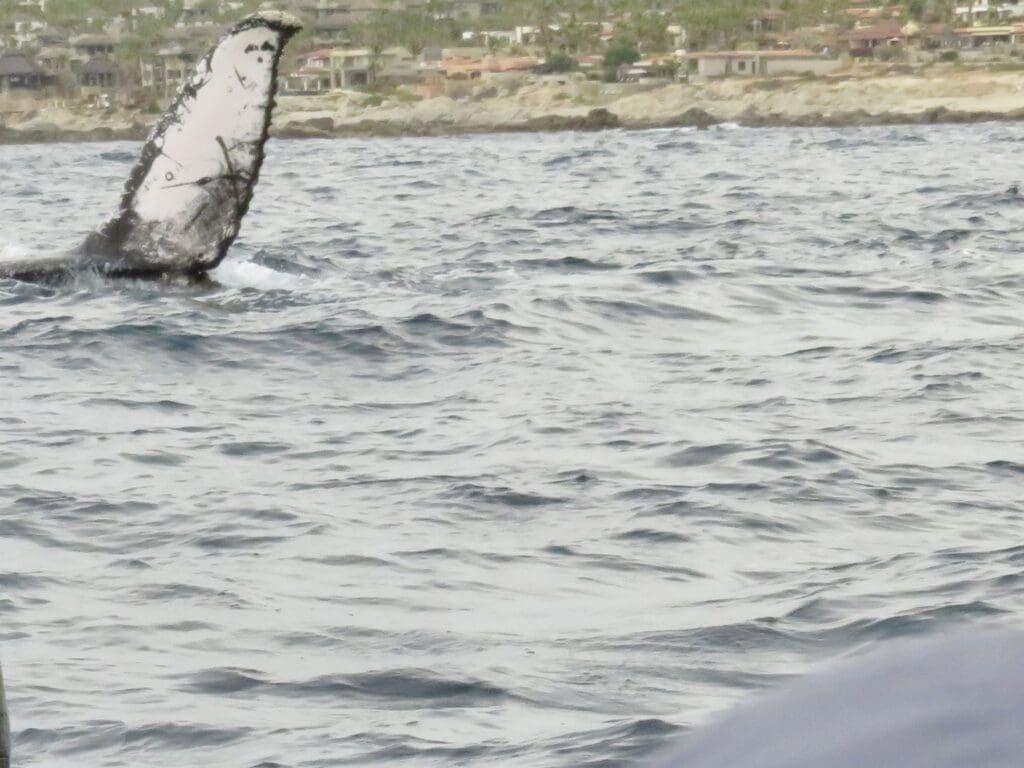
So our whale watching adventure was fun and informative, and we were able to fit in a bit of critter watching, shopping, margaritas and fish tacos before returning home and calling it an early evening.
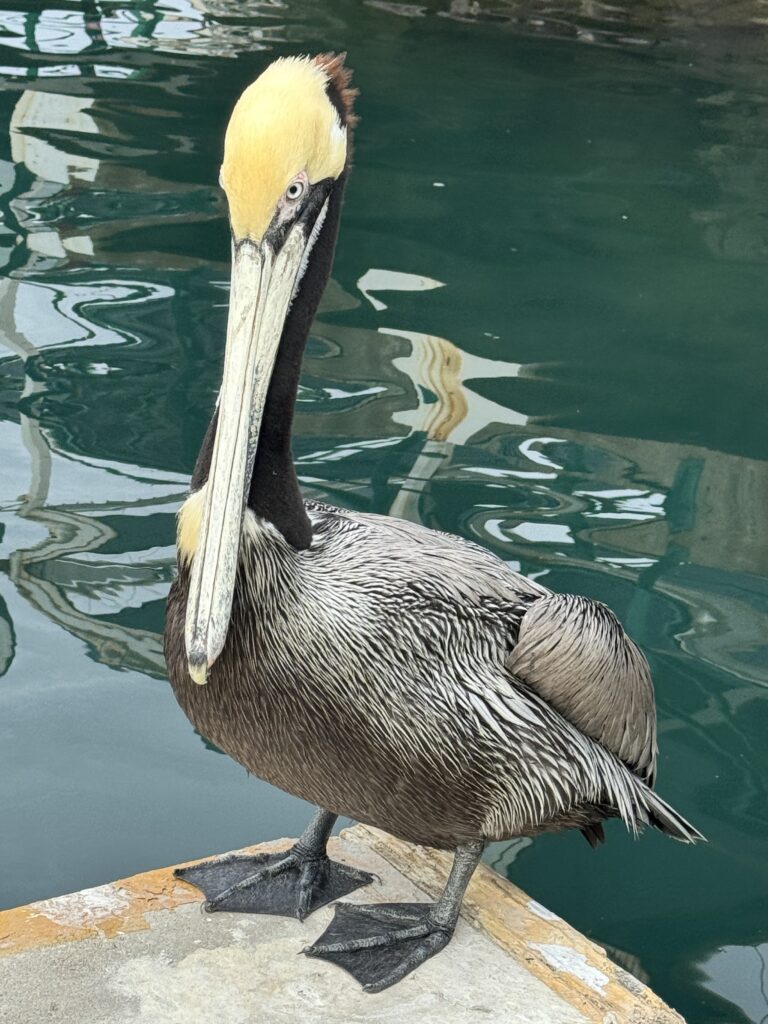
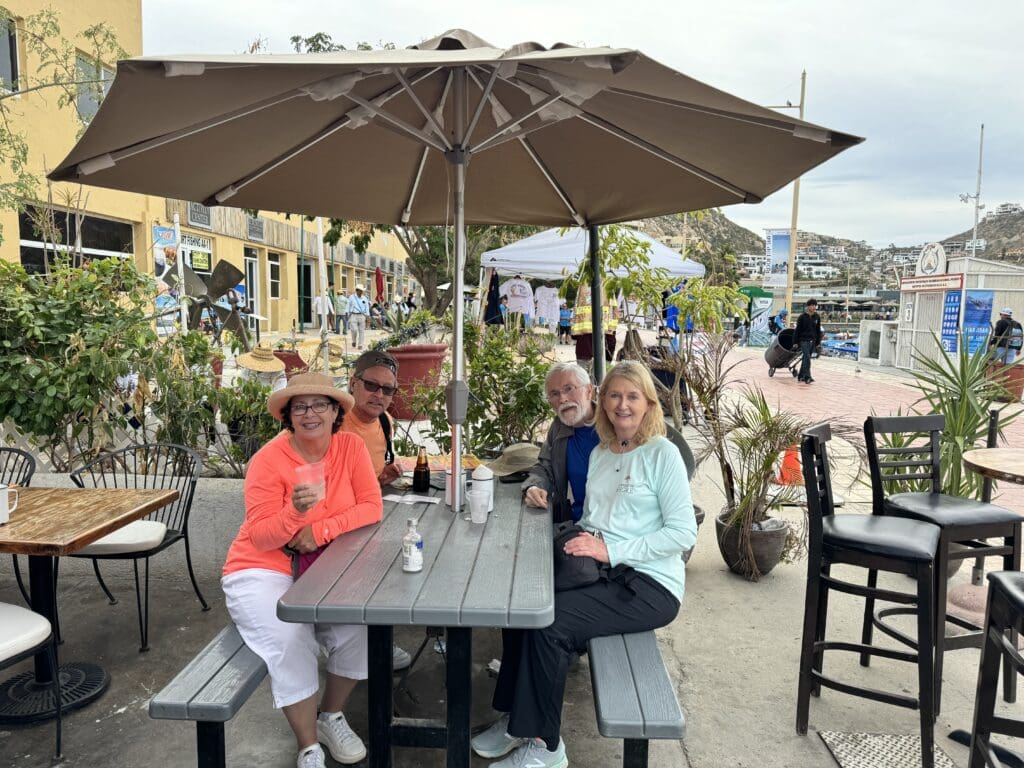
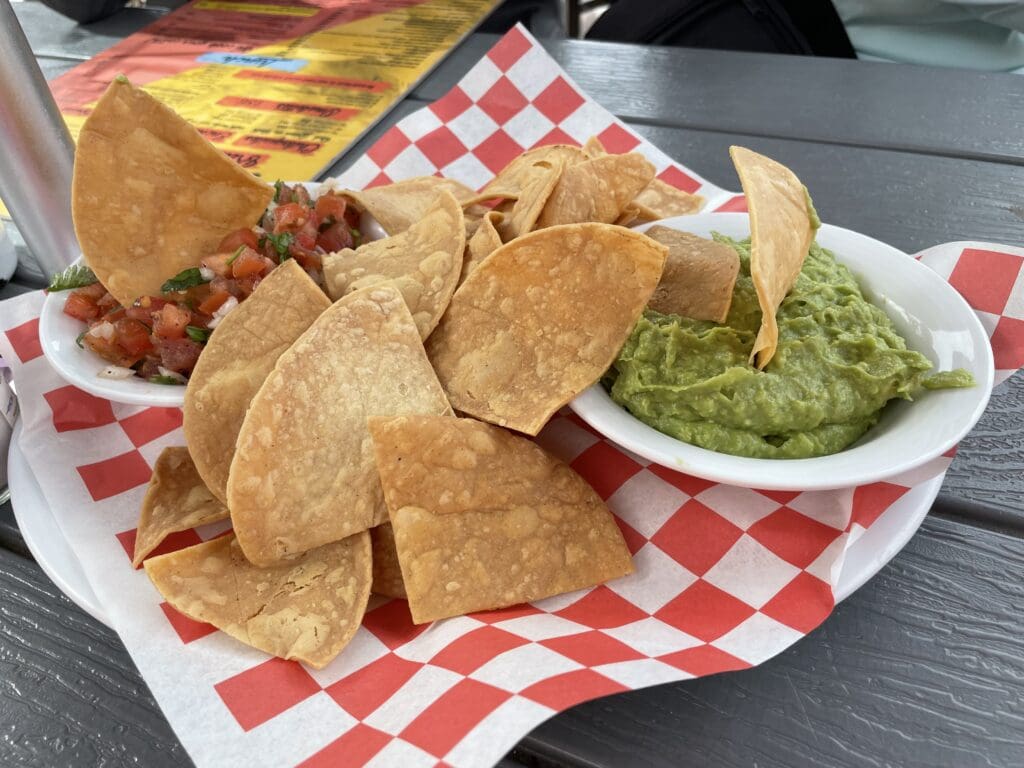
We have one Guatemala one last stop planned in Mexico before docking in Los Angeles on Sunday. But that will be another story…
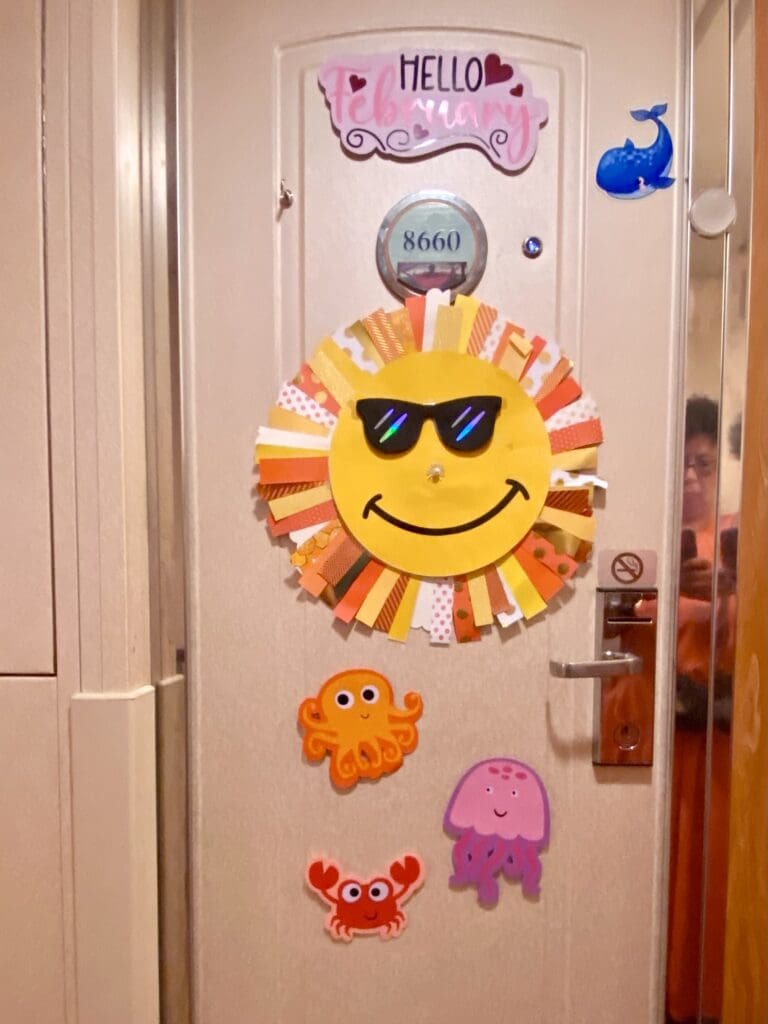
Thanks again for checking in amigos!
– Mike
“Do something that scares you every day.” – Eleanor Roosevelt

Recent Comments